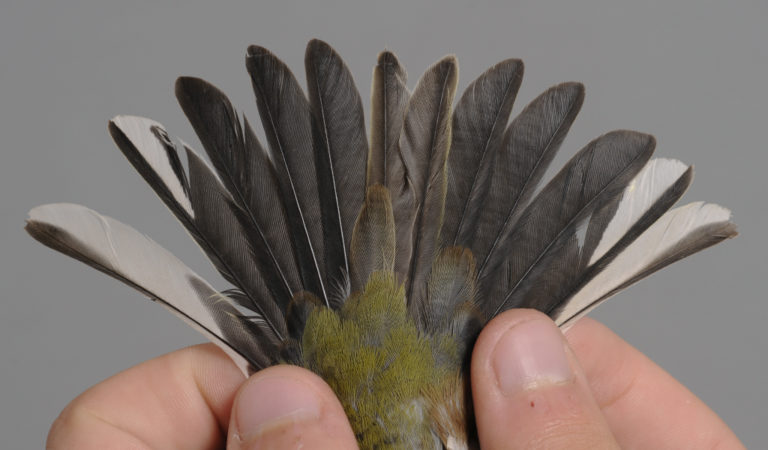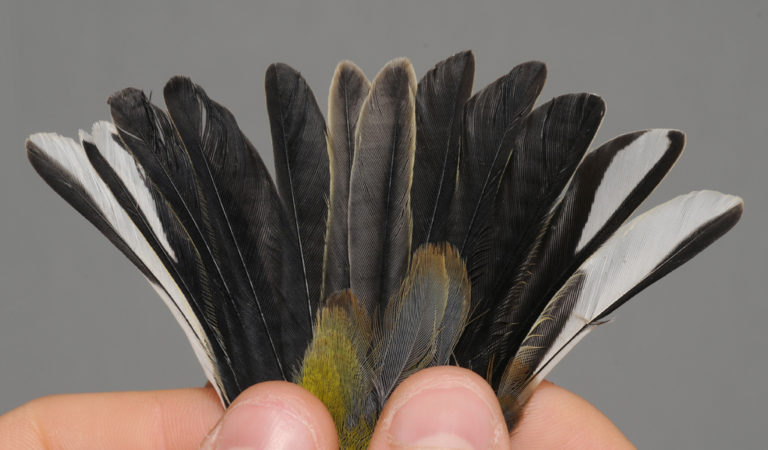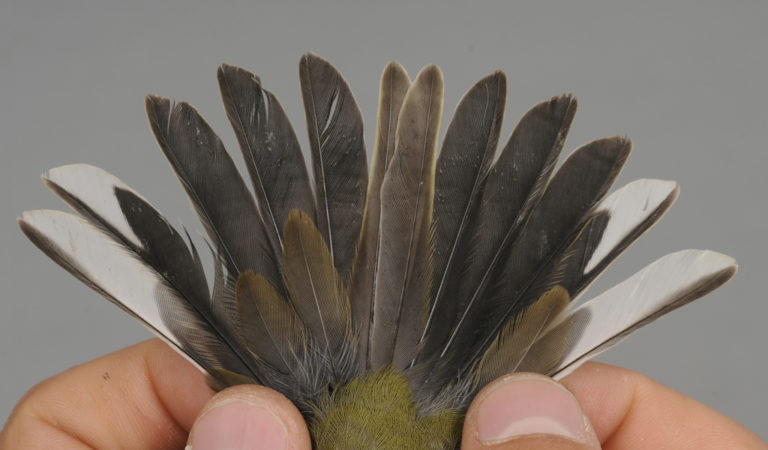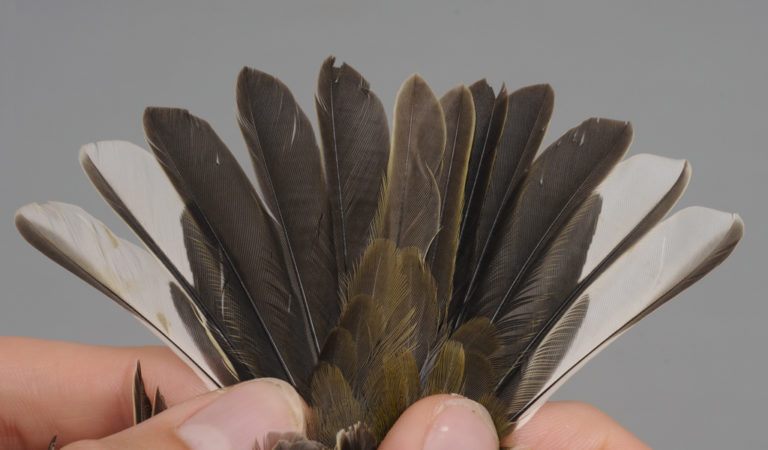

Chaffinch
AGE – BEST CRITERIA:
Moult contrast present in the wing of 1cy, generally among outer GC, or between GC and PC. A few birds also show contrasts in TT or RR. Adult birds show a uniform and freshly moulted plumage.
1cy:

1cy October (male). A uniform set of juvenile RR - rather narrow and slightly pointed and worn tips. [1ET80885]

1cy October (male). Not the easiest tail to assess, but under all circumstances two generations (juvenile and post-juvenile) of RR are present. In the right half, R4-5 are post-juvenile, and in the left half R2 (and perhaps also R5?) are post-juvenile. Remaining RR are most likely juvenile. [1ES79693]

1cy September (female). Uniformly juvenile RR, typically rather narrow and with worn, pointed, tips. Note that all birds are not as straight forward as this one, and some show sightly more adult-like RR than this. [1ET80553]

1cy September (female). This young bird actually shows a uniform post-juvenile tail, inseparable from adult birds. Such advanced moult should be extreamly rare (perhaps even impossible?) in Chaffinch, and it is more likely to be the result of a replacement following an accident. However, it still serves as clear reminder not to blindly trust the RR - always check the moult pattern in wing. [1ET80422]
More Fringilla coelebs:
Sexing autumn and spring
Ageing spring
Moult
Ringers’ DigiGuide is sponsored by:
Hemsidan producerad i samarbete med
BirdLife Sverige